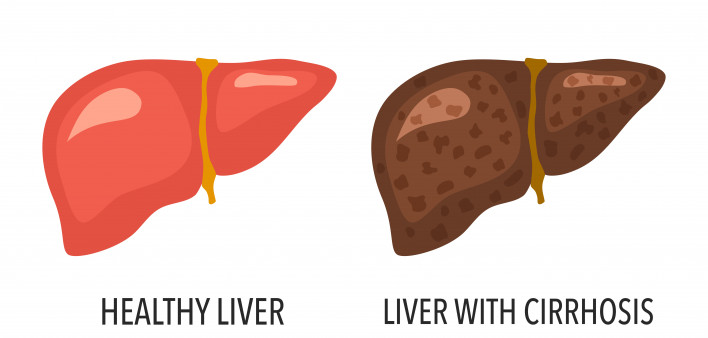Soon after HCV enters the body, it infects cells in the liver called hepatocytes. About 25% of people are able to clear the virus naturally, but a majority will develop chronic hepatitis C, meaning the infection stays with them for life unless they are treated.
Only a minority of people have symptoms during acute or early chronic HCV infection. But many people do have elevated liver enzymes, a sign of liver inflammation.
Some 10% to 20% of people with untreated hepatitis C will develop cirrhosis (also known as Stage F4 fibrosis), which occurs when scar tissue replaces functional liver cells. Over time, more and more normal tissue is replaced by scar tissue, obstructing the flow of blood through the liver and affecting its structure and function. Blood can back up in the digestive tract, leading portal hypertension, or high blood pressure in the main vein serving the liver.
Symptoms of advanced cirrhosis may include a bloated belly from fluid buildup (ascites), bleeding from enlarged blood vessels in the esophagus and stomach (varices) and cognitive impairment—and even coma—due to buildup of toxins in the brain (hepatic encephalopathy).
People with liver disease are at increased risk for hepatocellular carcinoma (HCC), the most common type of liver cancer. Studies show that people with chronic hepatitis C are also more likely to develop other health problems, including cardiovascular disease.
Although cirrhosis is not always life-threatening, between 1% and 5% of people with untreated chronic hepatitis C will die from liver cancer or liver failure. Effective antiviral treatment can slow or halt liver disease progression, but it does not always reverse existing damage, especially if a person has already developed cirrhosis. The good news is that people who are treated and cured before they develop cirrhosis have a life expectancy similar to that of the general population.







Comments
Comments